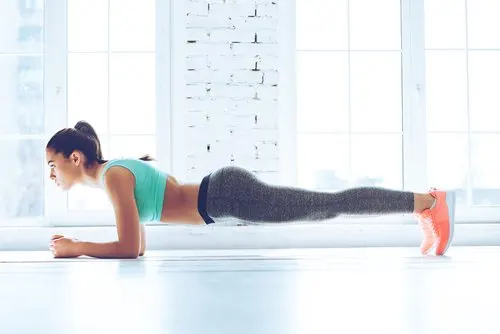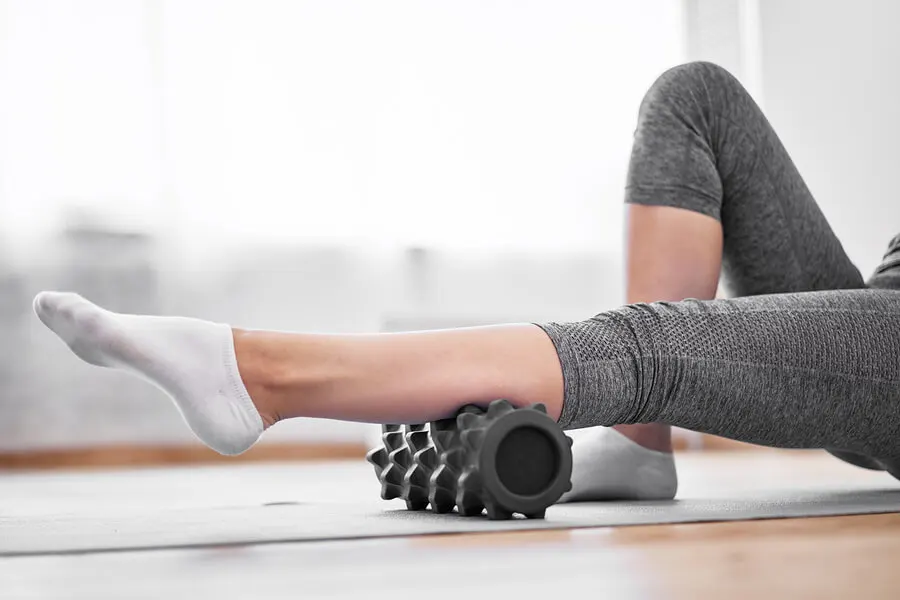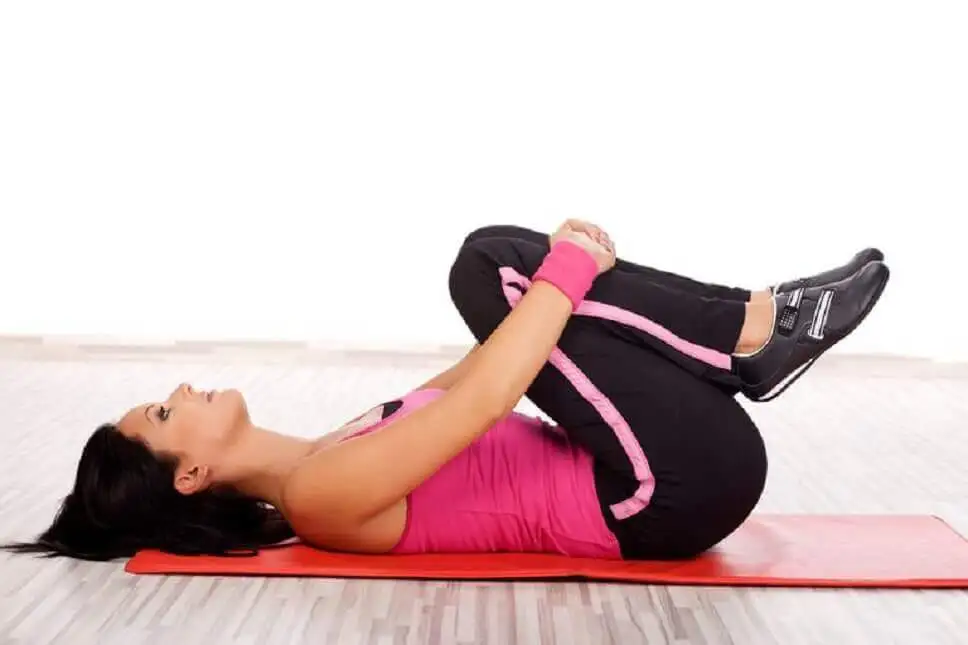6 Exercises to Fight Abdominal Fat


Reviewed and approved by the pedagogue in physical education and nutritionist Elisa Morales Lupayante
Having a flat, toned abdomen is one of the greatest ambitions among those who are looking to lose weight and improve their health. To help you achieve your goal, here are some of the best exercises to fight abdominal fat.
The fat that accumulates in this area of the body significantly affects our figure. And, even though many people don’t know it, it’s a risk to cardiovascular health.
It’s proven that you can fight abdominal fat with natural methods, without the need for strict diets or supplements. With proper nutrition, a good control of calories, and doing at least 30 minutes of exercise a day, you can achieve good results.
Several exercises can be done from the comfort of your own home to help you start leading a more active lifestyle and lose weight progressively.
The exercises we’re going to suggest combine cardiovascular activity with high-intensity training, to increase caloric expenditure and weight loss.
Exercises to fight abdominal fat
1. The Plank

First, we want to highlight the plank. This is a very popular exercise, as it works a large amount of muscles throughout the whole body.
Therefore, it’s recommended to activate the metabolic rate while strengthening the abdomen, buttocks, and lower back.
How to do it?
- First, lie face down on a yoga mat, leaning on your forearms and the tips of your toes.
- During the exercise, make sure to keep your body straight, without bending your hips and with your abdomen contracted.
- You will immediately feel that the abdominal wall makes a strong tension to support the position for a few seconds.
- Start off by holding for 20 seconds, and then increase it to 45.
Find out more: The Benefits of Doing Planks
2. Weighted obliques
Weighted obliques help burn calories and are a good option to reduce the inches on your belly and waist.
How to do them?
- First, form a V-shape with your upper torso and thighs; cross your legs and raise them.
- Then, hold a 5-pound (2 kilo) ball with both hands, directly in the chest area, and perform twisting movements from left to right.
- Complete 3 sets of 10 repetitions.
3. Roller exercises

If you have a roller or an exercise wheel, this activity is perfect for your abdominal routine.
Its use not only facilitates training, but it also has wonderful benefits to strengthen the muscles in this area of the body.
How to do them?
- First, lean on your knees on a mat and tightly grip both ends of the roller.
- Lower your body as you roll the wheel forward and, in a slow movement, return to the starting position.
- Perform 3 sets of 20 repetitions.
4. Bridge with leg raises
The bridge is an exercise that benefits the abdominal area as well as the glutes and hips.
In this case, we suggest you do it combined with leg raises to increase its intensity.
How to do it?
- First, lie on your back with your left knee bent, left foot flat on the floor and right leg extended toward the ceiling.
- Then, keep your arms at the sides of your body and lift your pelvis for 10 seconds.
- Rest, switch legs, and complete 10 to 12 repetitions with each leg.
5. Lower abs
The lower abs are usually one of the most problematic areas to work on, especially because it’s the area that tends to accumulate more fat.
This exercise, known as the guillotine, focuses on this area and, although it’s a bit complex, it helps to get the inches off.
How to do it?
- To begin, lift both legs. They should be at a 90-degree angle to the floor.
- Next, lower your legs without letting your feet touch the floor.
- Pause briefly (4 or 5 seconds) and then come lift up repeatedly.
- Perform 4 sets of 10 to 15 repetitions.
Find out more here: 7 Abdominal Plank Exercises to Work the Whole Core
6. Knees to chest

This type of abdominal exercise is ideal to combat excess fat, since, in addition to focusing on the belly, it serves as a cardiovascular activity.
How to do it?
- First, position yourself on your stomach so that you’re resting on your forearms and toes.
- During the exercise, be sure to keep your back straight and your abdomen contracted.
- Lift one of your knees to your chest, return to the starting position, and repeat the movement with the opposite leg.
- Make alternating movements with both legs, trying to do it as fast as possible.
- Do 30 to 40 repetitions.
Consistency and discipline are your best allies
Do you want to see results in a short time? Be consistent with the practice of these exercises and don’t forget to complement them with a good diet.
If you have any questions about how to follow the correct diet according to your needs and goals, consult a nutritionist.
All cited sources were thoroughly reviewed by our team to ensure their quality, reliability, currency, and validity. The bibliography of this article was considered reliable and of academic or scientific accuracy.
- Hernán C, La obesidad: un desorden metabólico de alto riesgo para la salud. Colombia Médica. 2002:chap 33, 2 Available at: colombiamedica.univalle.edu.co/index.php/comedica/article/view/224/227
- Healthline. 6 Simple ways to lose belly fat, based on science. [online] Available at: www.healthline.com/nutrition/6-proven-ways-to-lose-belly-fat
- Álvarez C, Ramírez R, Flores M, Zúñiga C, Celis CA, Morales, C. Efectos del ejercicio físico de alta intensidad y sobrecarga en parámetros de salud metabólica en mujeres sedentarias, pre-diabéticas con sobrepeso u obesidad. Rev Med Chile 2012; 140: 1289-1296 Available at: scielo.conicyt.cl/scielo.php?pid=S0034-98872012001000008&script=sci_arttext
This text is provided for informational purposes only and does not replace consultation with a professional. If in doubt, consult your specialist.








